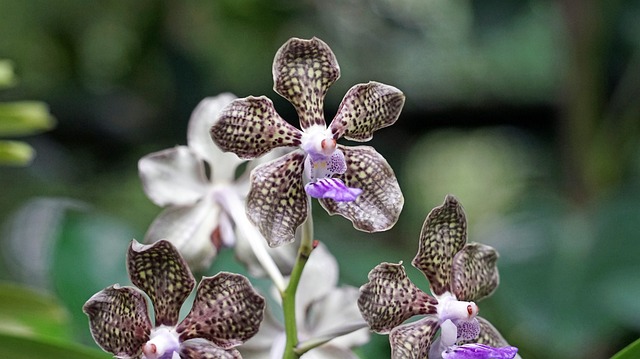Optimizing Lawns: The Synergy of Mulching and Edging for Peak Performance
Implementing effective lawn care and landscaping practices is essential for a thriving, beautiful lawn. Mulching, which involves applying organic matter like grass clippings to the soil, significantly benefits the lawn by enhancing soil health, …….

Implementing effective lawn care and landscaping practices is essential for a thriving, beautiful lawn. Mulching, which involves applying organic matter like grass clippings to the soil, significantly benefits the lawn by enhancing soil health, conserving moisture, and inhibiting weed growth. A 1 to 2-inch layer of mulch around plants aids in nutrient retention, moisture conservation, and weed suppression. Additionally, precise edging is crucial for maintaining clear, defined boundaries of the lawn, which promotes a cleaner, healthier environment and contributes to the overall aesthetic. Edging prevents grass encroachment into unwanted areas and facilitates efficient water and nutrient distribution, making mowing more straightforward and enhancing the visual appeal. Combining mulching with edging creates a robust lawn care routine that is both sustainable and visually pleasing. This approach not only elevates curb appeal but also simplifies maintenance tasks for an appealing outdoor space all year long, ensuring your landscaping stands out as a testament to your commitment to quality lawn maintenance.
title: “Optimizing Your Lawn’s Vitality: The Synergy of Mulching and Edging in Lawn Care and Landscaping”
A well-maintained lawn serves as the crown jewel of any landscape, offering both aesthetic appeal and a tranquil retreat. Central to achieving this ideal is a robust lawn care regimen that incorporates mulching and edging—practices that not only bolster your lawn’s health but also sharpen its curb appeal. This article delves into the intricacies of these essential lawn maintenance techniques, guiding you through the process of understanding how mulching enhances soil quality and conserves moisture, as well as mastering the precise art of edging to define clean, crisp borders. By combining these methods, your lawn will thrive, showcasing a vibrant green expanse that reflects the pinnacle of lawn care and landscaping excellence.
- Understanding the Role of Mulching in Optimal Lawn Care and Landscaping Practices
- Mastering the Art of Edging: Strategies for Precision and Perfect Borders in Lawn Maintenance
- Combining Mulching with Edging: A Comprehensive Guide to Enhancing Your Lawn's Appeal and Health
Understanding the Role of Mulching in Optimal Lawn Care and Landscaping Practices

Mulching plays a pivotal role in maintaining a healthy and vibrant lawn, which is integral to effective lawn care and landscaping practices. When grass clippings and organic matter are returned to the soil through mulching, they decompose and add nutrients back into the ground, fostering a nutrient-rich environment for grass growth. This natural recycling process not only enriches the soil but also helps in conserving moisture by shielding the soil from direct sunlight and reducing evaporation rates. As a result, lawns that incorporate mulching into their maintenance routines can experience less frequent watering needs, leading to cost savings and a more sustainable approach to lawn care and landscaping. Additionally, mulching helps in controlling weeds as it creates a barrier that makes it harder for weed seeds to germinate. Selecting the appropriate mulch type and maintaining an optimal thickness are key factors for successful mulching practices. Lawn care professionals often recommend a 1 to 2-inch layer of mulch around plants, which is sufficient to reap the benefits without causing soil aeration issues. Incorporating mulching into your lawn care and landscaping regimen can significantly enhance the overall health and appearance of your lawn, contributing to a well-manicured landscape that stands out in any neighborhood.
Mastering the Art of Edging: Strategies for Precision and Perfect Borders in Lawn Maintenance

Engaging in lawn care and landscaping requires a keen eye for detail, particularly when it comes to mastering the art of edging. A well-defined border not only enhances the aesthetic appeal of your lawn but also promotes healthier grass growth by preventing turf encroachment onto garden beds or walkways. To achieve precision in your edging, start by using a sharp, high-quality edging tool that suits the boundary type between your lawn and garden beds or pathways. The choice between a half-moon edger, spade, or edging shears will depend on the material of the border and personal preference. Regularly maintaining your tools to ensure they are in top condition is crucial for clean cuts that discourage grass from overstepping its bounds.
When edging, consider the contours and landscaping layout of your yard. Make deliberate, steady strokes along the edge of the lawn to create a sharp demarcation. Pay attention to changes in grade or soil levels, as these can affect where the lawn should end and the garden begin. For a professional finish, trim any grass that extends beyond the edged line with a trimmer or mower. Consistency is key; regular edging maintains the clarity of your lawn’s borders, deterring unwanted plant encroachment and making your landscaping design stand out. Additionally, proper edging can facilitate better water and nutrient distribution to both your lawn and garden, as well as simplify mowing tasks by providing clear paths for the mower to navigate. By integrating edging into your routine lawn care and landscaping practices, you’ll create a more manicured and polished outdoor space that reflects the care and attention you’ve invested in it.
Combining Mulching with Edging: A Comprehensive Guide to Enhancing Your Lawn's Appeal and Health

Lawn care and landscaping practices play a pivotal role in maintaining a healthy, aesthetically pleasing lawn. One effective approach to enhancing your lawn’s appeal and vitality is through the combined efforts of mulching and edging. Mulching serves as a protective layer for your soil, conserving moisture, regulating soil temperature, and preventing weed growth. It also enriches the soil with organic matter as it decomposes. When paired with edging, which clearly defines lawn edges and separates it from garden beds or hardscapes, mulching becomes even more effective. Edging helps to prevent grass encroachment on walkways or driveways, and allows for a neater, manicured look. The act of edging exposes the soil edge, enabling the mulch to be placed precisely where it’s most beneficial. This strategic placement ensures that the mulch effectively retains moisture close to the plants that need it most, while also providing an attractive finish that frames your lawn. By integrating these two practices, homeowners can achieve a healthier, more manicured lawn that stands out for its clean lines and rich, well-maintained appearance. For best results, it’s recommended to apply a fresh layer of mulch after edging, ensuring the mulch is several inches thick but not so much as to bury the grass edges. Regular maintenance, including both mulching and edging, contributes to a robust lawn care and landscaping regimen that can yield a lush, vibrant lawn throughout the growing season.
Effective lawn care and landscaping hinge on the strategic integration of practices like mulching and edging. These techniques not only refine the lawn’s borders but also enrich the soil and maintain its health, leading to a more vibrant landscape. By understanding the nuances of mulching and mastering the precision of edging, homeowners can elevate their lawns from ordinary to exceptional. This comprehensive guide serves as an essential resource for those looking to enhance their outdoor spaces with professional-level care. Embrace these practices to achieve a lawn that stands out in your community as a testament to meticulous landscaping and personal pride.







